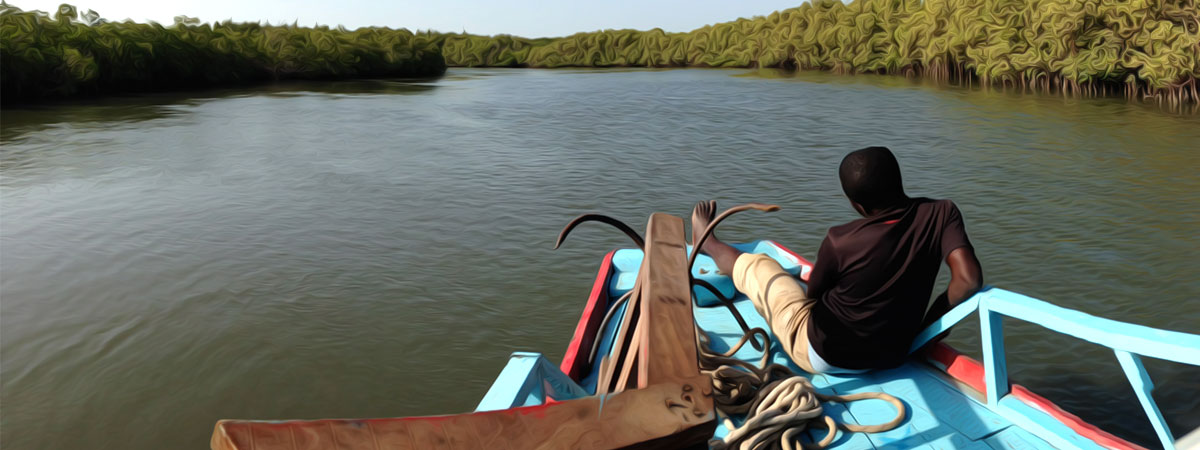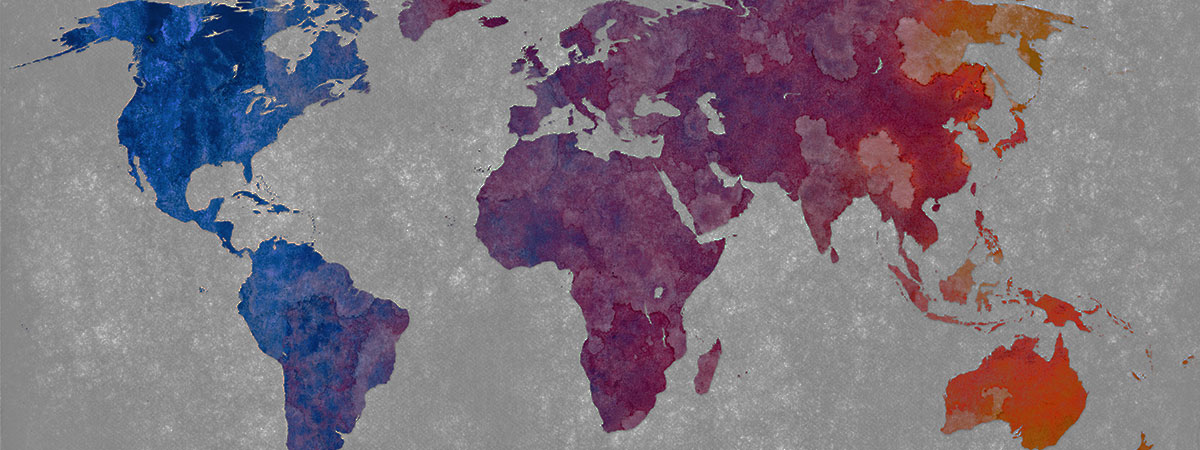There are few things that most people find more disgusting than raw sewage. Every community needs a wastewater treatment facility, yet no one wants to live near one. So the land around them is either undesirable or completely abandoned. At the other end of the spectrum, natural parks in urban areas are highly desirable in communities.
What if there were a way to combine the two? This has already been done with some success at New York City’s Riverbank State Park, a popular park built atop a Manhattan waste treatment facility. But the idea is being taken a big step further by Agua Inc. as they turn wastewater and its treatment into an asset for communities rather than a burden.
There’s no waste in nature. We have the same philosophy. Tweet This Quote
“There’s no waste in nature. We have the same philosophy,” says Pedro Tomas Delgado Ortiz, Unreasonable@Sea entrepreneur and co-founder and COO of Agua Inc. Simply put, Agua Inc. treats wastewater with plants, a method known as phytoremediation. However, Agua has taken phytoremediation to the next level. Their innovative ABIS (Aquatic Biological Integrated Systems) water-treatment method filters water through matrices of floating plants. While the leaves above water sequester carbon, the floating matrices, called an Agua BioMatrix, allow the roots to become water filters in two main ways: special aquatic plants aerate the water through their roots, creating a healthy ecosystem for microorganisms to breakdown pathogens and contaminants, and they absorb nutrients and heavy metals.
One of the unique innovations to existing phytoremediation methods is putting the plants in floatation, which dramatically increases their roots surface area contact with the water, and, subsequently, the quantity of air injected—the fuel for the overall treatment’s performance.
The Boulder, Colorado, company—with offices in Nairobi, Kenya and Madrid, Spain—boasts ten years of experience designing, installing, and maintaining over 200 sustainable wastewater-treatment systems all over the world—for public and private organizations. But in February of this year, Pedro and Bianca Griffith, co-founder and CEO, discovered a scalable model that could revolutionize water treatment systems around the world.
According to a report by the United Nations Environmental Program, nearly 90 percent of wastewater in emerging markets remains untreated when discharged—a massive contributor to the rapid growth of dead zones in rivers and oceans. This also has health concerns for surrounding communities as at least 1.8 million children under five years old die every year from water related disease. And in emerging markets, unsafe water is the number one cause of disease and death in these communities.
Waste is opportunity. Waste is a resource. Tweet This Quote
The harsh realities of preventable deaths from disease and detrimental effects of waste on the environment is a motivating force for the Agua team as Pedro points out, “Waste is opportunity. Waste is a resource.” Agua is now leapfrogging traditional water management systems in developed countries by designing sustainable infrastructure in emerging markets, and they’re financing this infrastructure by becoming a public utility—starting in the Gambia.
It began when Bianca was vacationing in the Gambia, and a friend asked her to take a look at the local wastewater infrastructure in Kotu, a coastal community that represents a small chunk of the half a million population of Serrekunda city. “They took me to a place called Kotu ponds,” says Bianca, “which is this giant dumping site for wastewater and raw sewage. It’s where all the sewage from local communities and all the raw sewage from thousands of hotels and commercial buildings come to.”
Kotu, located 20 minutes West of Banjul—the capital of the Gambia—is a popular vacation spot, but it also acts as a major water source for local farmers and the greater population of Serrekunda. Bianca recalls the major problems with the site: “The system is over capacity and there are numerous points where the sewage is leaking out and contaminating the ground water. Meanwhile thousands of gallons of sewage never make it to the lagoons and are directly dumped in rivers or piped straight to the ocean. Birds and other wildlife are getting sick, and some of the local farmers in the area are using this raw sewage for their crops and becoming sick from the contamination.”
Some of the local farmers in the area are using this raw sewage for their crops and becoming sick from the contaminated food. Tweet This Quote
The lagoons and ponds in Kotu are overrun with trash because the treatment facilities are over capacity—and deteriorating pumps and infrastructure make things worse. Furthermore, the horrible odors and the site of trash is detrimental to tourism—a major source of income for locals—and standing water has become the opportune breeding ground for mosquitos, which in turn spread malaria.
“The Gambia is a very special place to me—it’s like a second home—so I started talking to some of my friends in the government about the situation,” states Bianca, “and asked if we could do something about this. What became clear very quickly, was that there was no money. In many developing countries like The Gambia there are so many development needs and often not enough funds for all. The government realizes that there’s a problem on their hands, but they couldn’t afford to solve their problem. Traditionally in our projects, someone comes in and says here is the money, go and design a solution. But in this case, there was no money. So we had to look at our systems and ask how do we bring this service to communities that need it but can’t afford to pay for it.”
Agua’s expertise in designing wastewater treatment systems allowed them to find a profitable solution with their biotechnology. By combining Agua’s highly cost effective technology with a new perspective on project economics they discovered that they could implement the new system by becoming a public utility and fund the implementation through private investment. This is revolutionary because most wastewater treatment facilities require government subsidies to meet the gap between income generated from operations, and the costs of development and on-going operations.
We want to show the rest of the world how it’s possible to treat water in an ecological, affordable, and accessible way. Tweet This Quote
“One of the most exciting things about this project,” says Bianca, “is a new way to finance infrastructure projects—to finance sanitation projects. [The government] gives us a concession—a lease to this giant land, these lagoons—and then we go in and bring private investors to upgrade the system, to make the system work better, and to do all things required to protect the environment and protect public health. We then run it as a utility.”
We moved there. We learn with the Africans. Tweet This Quote
The public therefore pays the same previously-set price by the government, but they pay Agua. And because Agua’s capacity is higher and their operations more refined, costs are low enough to give substantial returns to investors and make a profit. The solution benefits all parties, as Bianca explains: “The government doesn’t have to worry about the responsibility for managing the system and it increases their credibility because they’re also operating a better service ultimately for their citizens. And the environment is protected. Meanwhile, for investors, it’s an incredible opportunity to make a great return doing something that creates a positive impact.”
“We believe that economic growth, social well-being, and environmental sustainability and development go hand in hand,” says Bianca, “What is exciting about Africa, is that there is an opportunity to leap frog conventional technology and past mistakes of other countries, and to develop straight from the beginning using modern and ecological technology that can bring about all of these simultaneously.”
Agua isn’t looking to turn Kotu ponds into just a wastewater treatment center but rather a place where people can enjoy the procession of Earth’s natural cycle. “We want to show the rest of the world how it’s possible to treat water in an ecological, affordable, and accessible way,” says Pedro, “We want to create a park. A space for people to come and watch the birds.” Since their process acts in synergy with nature, they are leveraging the full potential of their technology by creating a campus—a center for education and innovation of social and environmental technologies—inside the water treatment center.
This isn’t just a solution for Africa, this is a technology and strategy that will revolutionize the way water is treated around the world. Tweet This Quote
“Many people in Silicon Valley think about how they can solve big problems,” Pedro says. “But they never go to Africa. We moved there. We learn with the Africans. And we’re so grateful for the help of the government of the Gambia, the people of the Gambia, because it’s a friendly country with very good people.”
Proving this model means that Agua has the potential to solve some of the greatest problems in history—problems that plague millions of people in Africa who don’t have access to clean water. And they’re doing it by mimicking natural processes that can be replicated globally.
“This isn’t just a solution for Africa,” Bianca says, “this is a technology and strategy that will revolutionize the way water is treated around the world. It is a technology that has helped hundreds of utilities improve their energy efficiency, sequester carbon, save money, and improve lives and the environment. What has changed, is that by innovating our economic strategy, more interested individuals will be able to be involved as investors and more communities, in Africa, the US, and around the globe will have cleaner water and healthier communities. What would you do if you could make money and create a positive impact at the same time?”



